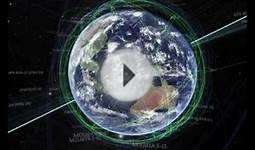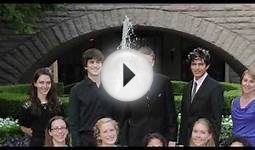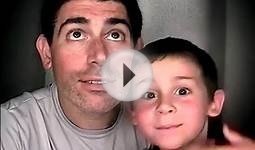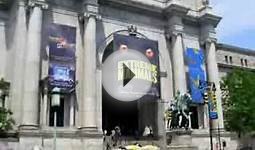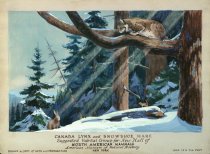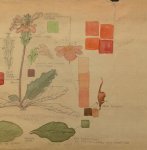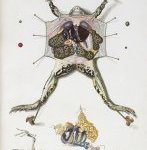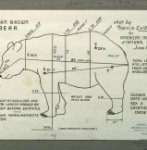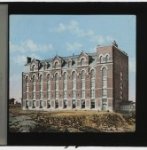American Museum Of Natural History photos
Bringing a section of a huge sequoia tree into the museum involved cutting it into two or three pieces, according to Baione. "I can tell by the floor where that was, and that’s kind of neat, " he says. "You look at the guys who are actually doing the moving and they’re in some decidedly different kind of clothes. If you look at the guy who is holding some kind of leather, his work clothes look filthy."
2. Painting of the suggested Canada Lynx and Snowshoe Hare Group habitat, Hall of North American Mammals, 1935.
This painting of the Canada lynx and hare diorama looks quite different from the finished product. "In the diorama itself, the rabbit is taking shelter under a bush and the lynx is totally on top of him, but the rabbit has no idea, " Baione says. "It did change and it’s interesting to see the thought process behind how things changed as they were being created."
3. Carl Lumholtz at granary, giant "olla", Cave Valley, Chihuahua, Mexico, 1891.
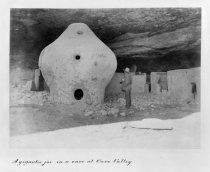
William Libbey
That big jar, Baione says, is the granary: "These cave dwelling communities would store grain to keep it dry and free from pests like rats or squirrels."
4. Girl holding bull frog, Natural Science Center, 1958.
Robert Elwood Logan
The museum still has a Natural Science Center like the one this girl visited in 1958. "They have demonstrations and live animals, " Baione says. "There’s something called a discovery room where kids can go, and provided they’re here with a parent, they have specimens that kids can touch and they have reproductions of artifacts that can also interact with. There’s still lots of fun stuff for kids."
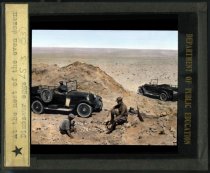 5. Hand colored lantern slide of Roy Chapman Andrews and George Olsen at nest of "the even dozen dinosaur eggs, ” Third Asiatic Expedition, Mongolia, 1925.
5. Hand colored lantern slide of Roy Chapman Andrews and George Olsen at nest of "the even dozen dinosaur eggs, ” Third Asiatic Expedition, Mongolia, 1925.
James B. Shackelford
Lantern slides, Baione explains, are photographic prints made on glass. An artist would handcolor the slide, which would then be projected. This particular slide comes from the expedition where museum explorer Ray Chapman Andrews and his crew discovered fossilized dinosaur eggs. "Knowing Andrews, it was probably a little while afterwards—after they could clean up the mess and pose a little bit, " Baione says. "It’s a little bit of a studio shot. But a good one. It was a huge deal because it was the first time something like that was discovered."
6. Installing models for the Forest Floor exhibit, 1958.
Alex J. Rota
Visitors to the museum will recognize this particular display. "The forest floor is where a lot of decomposition goes on, so in terms of ecology and nature, it is an important place, " Baione says. "It’s neat to see the guy who created it in the diorama, pushing it around, getting in the right position. And it’s still here!"
You might also like
